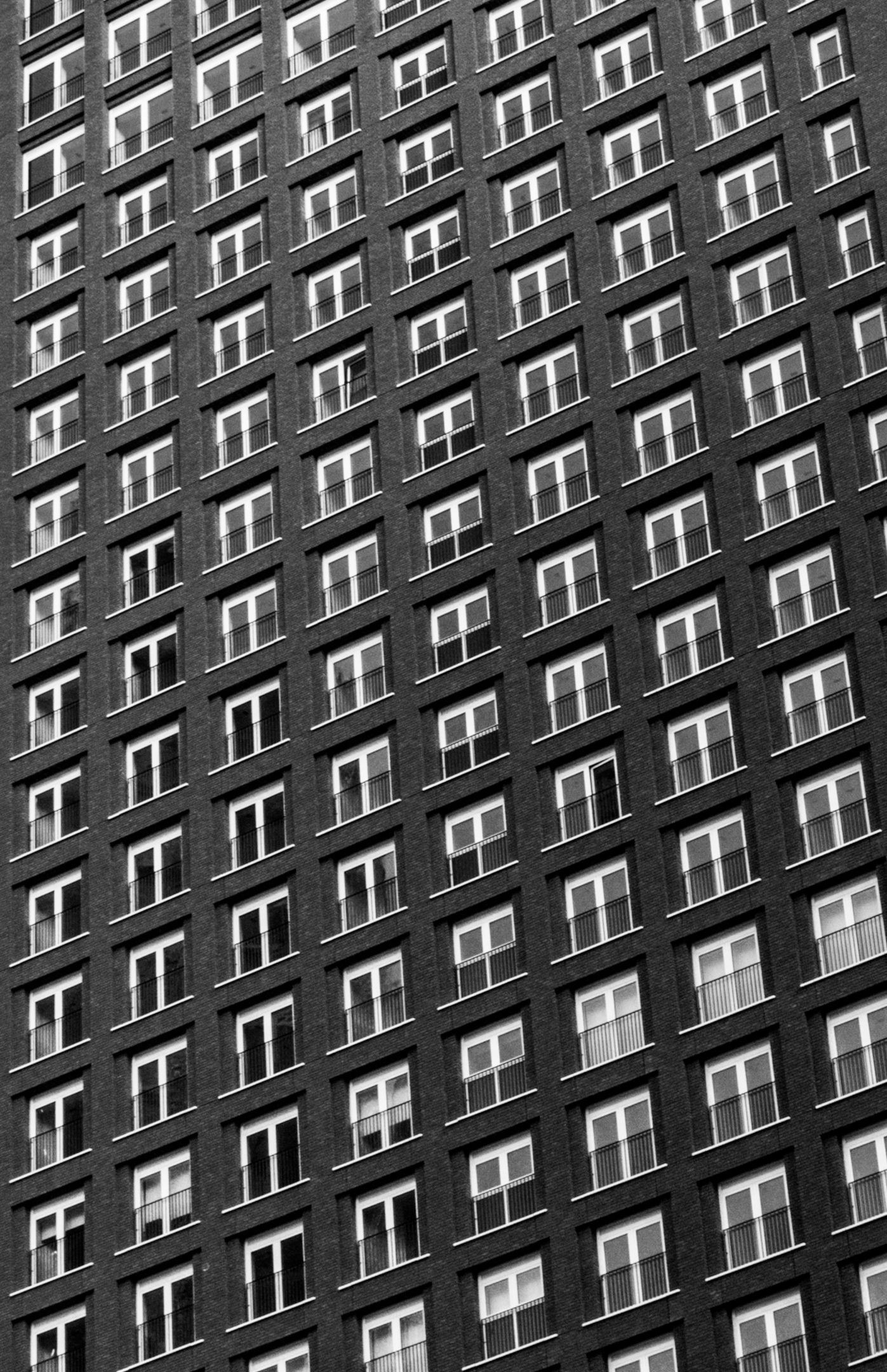As urban areas continue to expand and populations grow, the demand for housing rises. High-density housing has become an increasingly popular solution in cities like Los Angeles, Chicago, and New York City to accommodate their growing populations. In this comprehensive guide, we will define high-density housing, explore its impact on communities and public services, and discuss the advantages and drawbacks of such developments.
Table of contents
- What is High-Density Housing?
- Advantages of High-Density Housing
- Differences between Low-Density and High-Density Housing
- Environmental Benefits of High-Density Housing
- How High-Density Housing Impacts Affordability
- Urban Planning Considerations
- Considerations for Multifamily Landlords
- Impact of High-Density Housing
- Examples of Positive and Negative Impacts of High-Density Housing
- Finding Balance: Balancing High-Density Housing Advantages and Disadvantages
Suggested Posts

What is High-Density Housing?
High-density housing is a type of development that accommodates a higher population density than average. This higher density development means more people live in a smaller area compared to other types of housing. Such housing can include high-rise apartments, luxury lofts, or repurposed commercial buildings.
Advantages
Lower Cost to Maintain Infrastructure
High-density housing typically requires less space for roads and utilities, reducing the cost of maintaining infrastructure compared to low-density housing. Consequently, cities can allocate more resources to other areas, such as public transit or parks.
Less Traffic
With more people living in a concentrated area, high-density housing can reduce the amount of traffic on roads. This leads to less congestion and a more efficient public transportation system.

Reduces Urban Decay
Such housing can help reduce urban decay. When more high rise buildings and more people live in an area, there tend to be fewer abandoned buildings and empty lots. This leads to increased economic activity in the area and a reduced risk of crime.
Increases Property Value
High density housing can increase property values in the surrounding area. When there are more people living in an area, there tends to be more demand for housing. This can result in increased property values for both high and low residential housing in the surrounding area.
Differences between Low-Density and High-Density Housing
The primary difference between the two types of housing is the number of people living in a given area. Low-density housing typically has fewer people living in a larger area (mostly including single-family homes or townhouses), while high-density housing has more people living in a smaller area (apartments/ condos).
Environmental Benefits of High-Density Housing
High-density housing can also offer environmental benefits. With more people living in a smaller area, there is less need for cars and more opportunities for public transit. This can lead to reduced greenhouse gas emissions and a more sustainable transportation system.
High-density housing can be an effective solution to shortages in urban areas. However, understanding its potential advantages and drawbacks is crucial. By considering the needs of the community and addressing the positive and negative aspects, such housing can be a viable option for addressing urban population growth. To further explore the topic, we’ll dive into the impact on affordability, urban planning considerations, and multifamily landlord considerations.
How High-Density Housing Impacts Affordability

High-density housing can play a significant role in making urban living more affordable. Smaller living spaces in units are often more cost-effective, which means they can be rented or sold at lower prices, making them accessible to a broader range of income levels. Additionally, this type of residential set-up can help stabilize rent prices in an area by increasing the overall housing supply. This can reduce competition and lead to more balanced rent prices.
Example: In Los Angeles, the construction of high-density housing developments has led to an increase in affordable options for middle-income earners. By using high density apartments and offering smaller and more cost-effective living spaces, these developments have helped ease the burden of skyrocketing rent prices for many residents.
Urban Planning Considerations

When implementing high-density housing, it is essential to consider several urban planning factors to ensure a successful integration of such developments into the existing community. Some crucial considerations include:
- Transportation: A well-designed public transit system is essential. This includes buses, trains, and bike lanes, as well as walkable streets that promote pedestrian traffic.
- Green Spaces: Integrating parks and green spaces can improve the quality of life for residents by providing areas for recreation, relaxation, and socialization.
- Amenities: Ensuring that such developments have easy access to essential amenities such as grocery stores, schools, and healthcare facilities can help create self-sufficient communities.
- Community Involvement: Encouraging community involvement in the planning process can help address concerns and build support.
Considerations for Multifamily Landlords
For landlords managing multifamily housing, there are several considerations to keep in mind:
- Tenant Selection: Establishing a rigorous tenant screening process can help ensure that residents are responsible and respectful of their neighbors and the property.
- Noise Control: Implementing soundproofing measures, such as installing double-paned windows and insulated walls, can help reduce noise disturbances and maintain a peaceful living environment.
- Security: Investing in security measures, such as access control systems and security cameras, can help keep residents safe and create a sense of community.
- Maintenance and Repairs: Staying on top of regular maintenance and repairs can help keep the property in good condition and prevent costly issues down the line.
Impact of High-Density Housing
High-density housing can have both positive and negative effects on the communities in which they are built. Some key impacts of high density communities include:
Positive Impacts
- Increased housing supply: High-density housing maximizes the use of a given plot of land, allowing for more units to be built.
- More affordable: Such living units are often smaller in size and more economical, making them an attractive option for those looking for affordable options.
- Reduced urban sprawl: By building vertically instead of horizontally, high-density residential units can help reduce urban sprawl and preserve green spaces.
- Sustainable living: With smaller living spaces, these units can encourage a more sustainable lifestyle with less energy usage and fewer carbon emissions.
Negative Impacts
- Overcrowding: With more people living in a smaller area, it can create issues with overcrowding and overburdened infrastructure.
- Lack of privacy: Living in close proximity to neighbors may be a drawback for some who value privacy and personal space.
- Increased traffic and noise: With more people living in a smaller area, there is bound to be more traffic and noise, which can present challenges for those living in these residential units.
Examples of Positive and Negative Impacts of High-Density Housing
Positive Impact: A Story of Sustainable Living
Meet Jane, a young professional who recently moved into a high-density living in New York City. The building’s sustainable design, including energy-efficient appliances and a green rooftop garden, appealed to Jane’s environmentally conscious lifestyle. Thanks to the building’s proximity to public transit, she no longer needs a car and can easily commute to work via the subway. The development also offers a range of affordable living options, allowing Jane to live comfortably without breaking the bank.
Negative Impact: Struggling with Overcrowding and Noise
In contrast, Tom and Sarah, a young couple, moved into a high-rise apartment building in a bustling Chicago neighborhood. While initially attracted to the affordable rent prices and central location, they soon realized the drawbacks of living in high-density units. The building’s thin walls and close proximity to neighbors resulted in constant noise disturbances, impacting their quality of life and making it difficult to relax at home. Overcrowding in the building led to traffic congestion due to issues with parking, long wait times for elevators, and strain on shared amenities like laundry facilities. Frustrated by these challenges, Tom and Sarah began considering a move to a low-density living option.
Finding Balance: Balancing High-Density Housing Advantages and Disadvantages
The key to finding the right residential unit is finding a balance between the advantages and disadvantages. City planners, real estate developers, and landlords must work together to address potential issues while promoting the benefits.
Strategies for Success
- Mixed-Use Development: Integrating residential, commercial, and recreational spaces within a single development can create vibrant, self-sufficient communities, reducing the need for residents to travel long distances for essential services and amenities.
- Inclusive Urban Planning: Engaging community members in the planning process can help address concerns, build support, and ensure that such developments are tailored to the needs of the community.
- Innovative Design Solutions: Implementing innovative design features, such as soundproofing, green spaces, and energy-efficient technologies, can help maximize the benefits of high-density living units while minimizing the drawbacks.
Conclusion
High-density housing can be an effective solution to the growing market demand for urban living, offering increased affordability and sustainability for residents. However, it is essential to carefully consider the potential drawbacks, such as overcrowding, noise, and strain on infrastructure. By working together, city planners, developers, and landlords can create high-density living that successfully balance the advantages and disadvantages, providing a viable and desirable option for urban living.
Upgrade Your Building Security
Please share more details about your building so we can find the perfect solution for you!

![Commercial to Multifamily Residential Conversion [2023]](/static/aef5271dcfc25d2f7dae95daf19581fa/7b0b2/commercial-to-multifamily-conversion-scaled.jpg)


